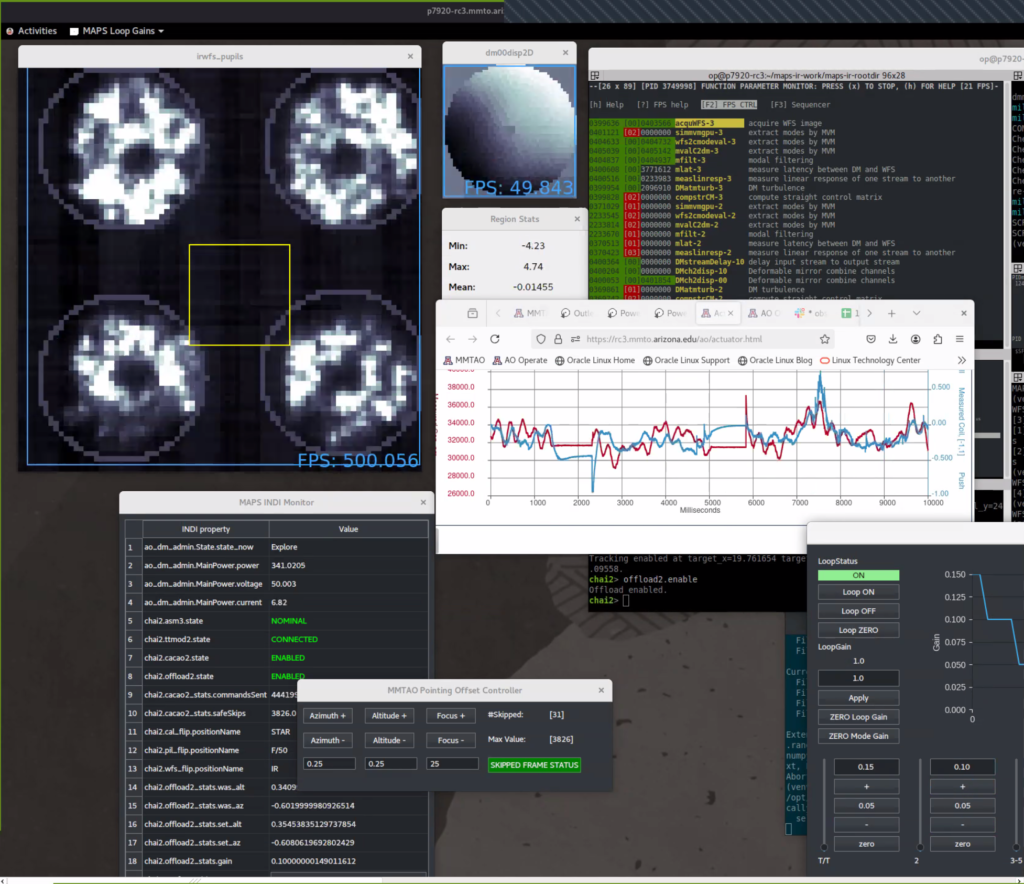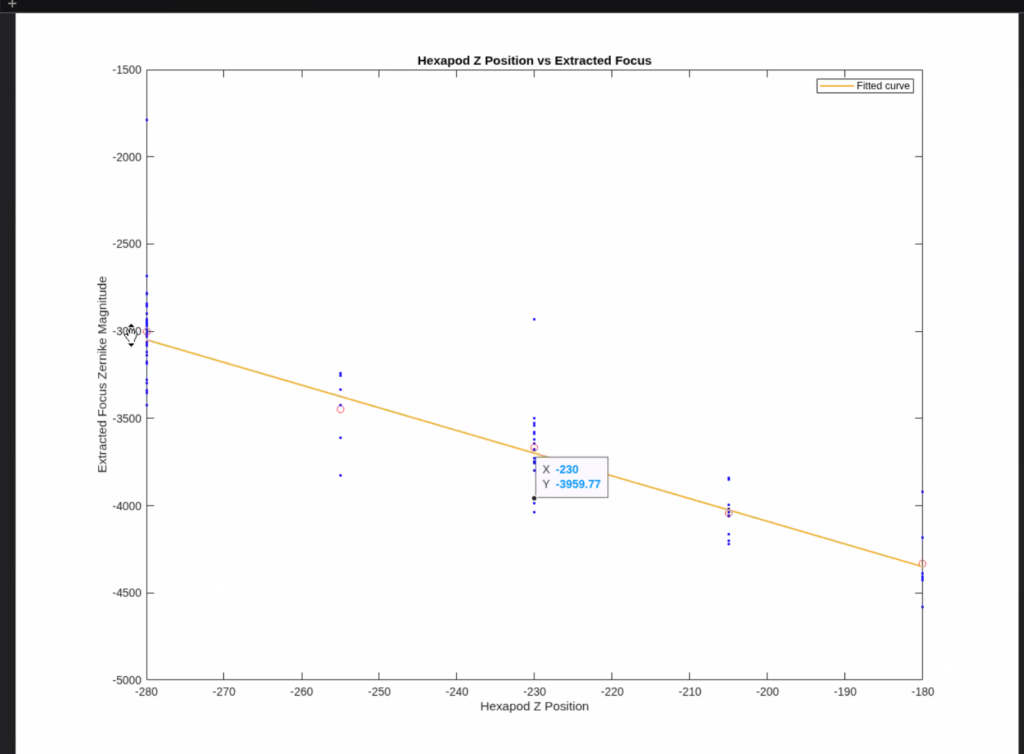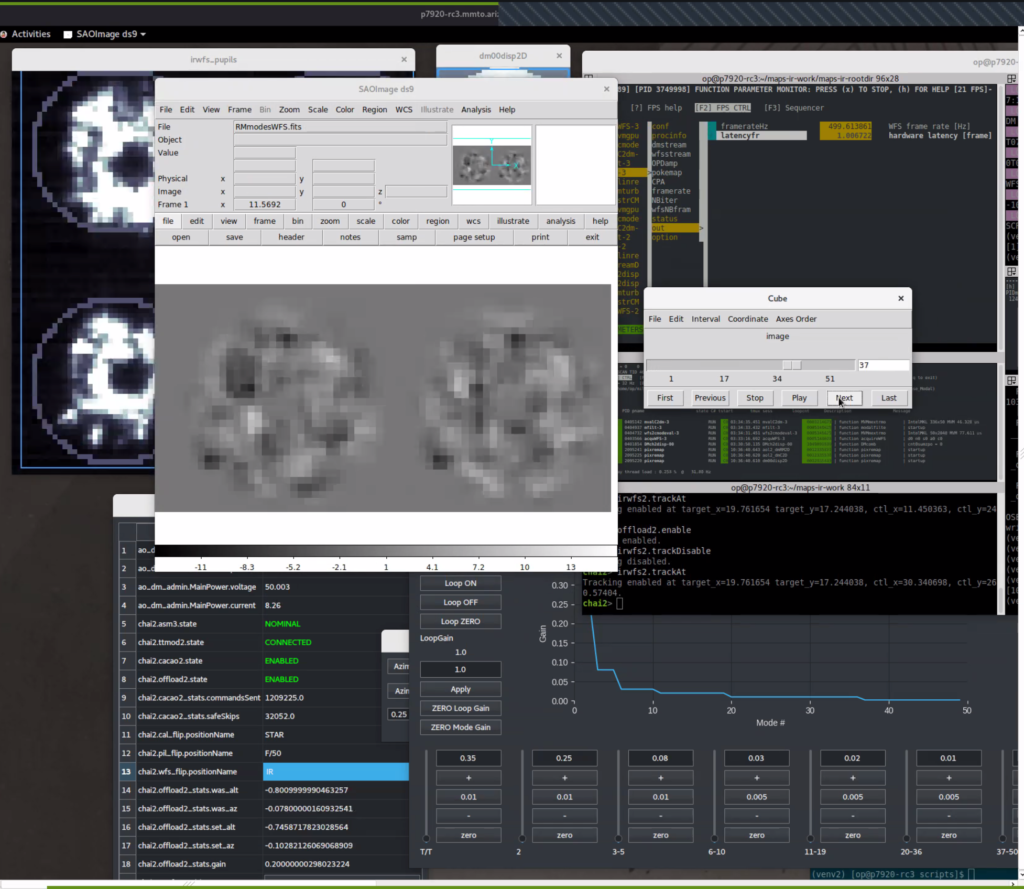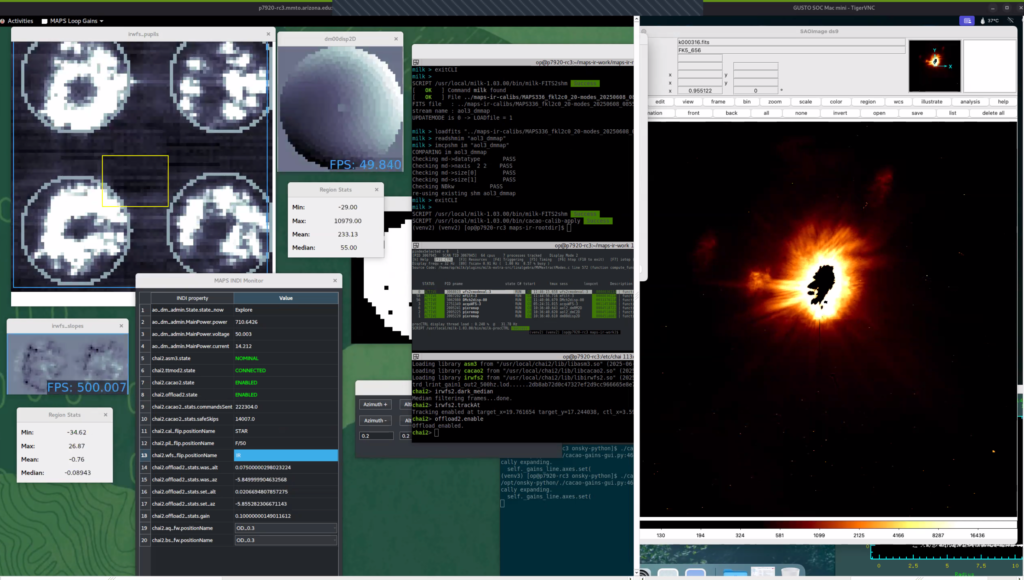Tonight we tested the new ASM-cooling fans for introduced vibrations:

It was a great time to do this test since we were getting E-stops on the ASM from some overheating actuators. We found that the fans did not introduce appreciable vibrations that couldn’t be taken out by the AO, so we went ahead and turned the fans on for the rest of the night!
We then analyzed the test we did yesterday where we took 5 RMs and compared them to make sure the RMs are actually repeatable modes. We found that they were modal and repeatable!
The next thing was off-loading focus to the hexapod.

And then we tested a 50-modes loop with the IR WFS:

And took some data:


We had some over temperatures so we paused to let the ASM cool down. But the fans were helping because this is no where near the amount of pausing we had to do last June.
And that’s the end of a great run where we made a lot of progress working on CACAO and the IR WFS, and the first run where we’ve had 100% efficiency! 5 nights on the schedule, 5 full nights of clear skies, good weather, and working instruments!!!
The song of the night is “Bridget’s Song” by Celia Farran:



